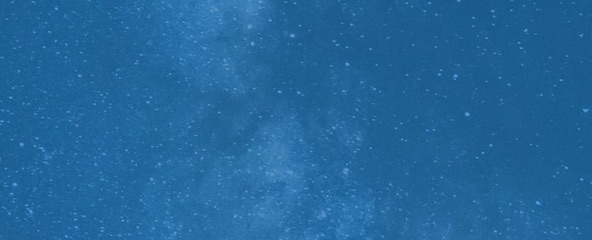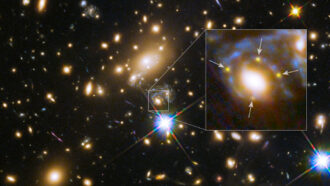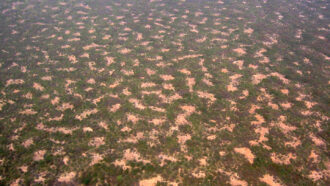
James Riordon is a freelance science writer who covers physics, math and astronomy, and coauthor of the book Ghost Particle – In Search of the Elusive and Mysterious Neutrino.

Trustworthy journalism comes at a price.
Scientists and journalists share a core belief in questioning, observing and verifying to reach the truth. Science News reports on crucial research and discovery across science disciplines. We need your financial support to make it happen – every contribution makes a difference.
All Stories by James R. Riordon
-
 Astronomy
AstronomyA reappearing supernova offers a new measure of the universe’s expansion
Supernova Refsdal blew up once but burst into view at least five times. The timing of its appearances provides clues to how fast the universe is growing.
-
 Astronomy
AstronomyThe James Webb telescope revealed surprise asteroids in the Fomalhaut star system
New images of Fomalhaut confirm that an alleged planet is probably just dust while also revealing a new asteroid belt and a “Great Dust Cloud.”
-
 Astronomy
AstronomyFor the first time, astrophysicists have caught a star eating a planet
A burst of light and a cloud of dust are signs that a star 12,000 light-years away swallowed a planet up to 10 times the mass of Jupiter.
-
 Physics
PhysicsVideos of gold nanoparticles snapping together show how some crystals grow
Real-time electron microscopy shows gold nanoparticles tumbling and sliding in a fluid before snapping together in crystalline structures.
-
 Physics
PhysicsThe W boson might not be heavier than expected after all
A new and improved look at the mass of the W boson is in close alignment with theory, but it doesn’t negate an earlier, controversial measurement.
-
 Math
MathChia seedlings verify Alan Turing’s ideas about patterns in nature
New experiments confirm that complex patterns in plants emerge from a model proposed by mathematician Alan Turing.
-
 Physics
PhysicsStatic electricity helps parasitic nematodes glom onto victims
The small electric charge generated by a moving insect is enough to affect the trajectory of a parasitic nematode’s leap so it lands right on its host.
-
 Physics
PhysicsIs this the superconductor of scientists’ dreams? A new claim faces scrutiny
It’s big, if true: transmitting electricity with no resistance at room temperature and moderate pressure. But controversy dogs the team making the claim.
-
 Physics
PhysicsPhysicists stored data in quantum holograms made of twisted light
Light that travels in corkscrew-like paths provides a way to make holograms that store large amounts of data in ultrasecure packages.
-
 Physics
PhysicsMuon scanning hints at mysteries within an ancient Chinese wall
Density fluctuations within the ancient rampart encircling the city of Xi’an could be defects or yet-to-be-discovered archaeological finds.
-
 Astronomy
AstronomyLots of Tatooine-like planets around binary stars may be habitable
A new simulation suggests that planets orbiting a pair of stars may be plentiful, and many of those worlds could be suitable for life.
-
 Materials Science
Materials ScienceWant a ‘Shrinky Dinks’ approach to nano-sized devices? Try hydrogels
Patterning hydrogels with a laser and then shrinking them down with chemicals offers a way to make nanoscopic structures out of many materials.